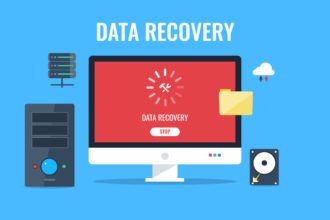 Enterprise mobile apps are being commissioned at a hectic pace across all industries, geographies and business processes.
Enterprise mobile apps are being commissioned at a hectic pace across all industries, geographies and business processes.
Employees see mobile apps as an essential means of resolving issues raised in phone calls, emails and other messages delivered by smartphones and tablets usually while the employee is ‘off site’ and ‘off duty.’
 Enterprise mobile apps are being commissioned at a hectic pace across all industries, geographies and business processes.
Enterprise mobile apps are being commissioned at a hectic pace across all industries, geographies and business processes.
Employees see mobile apps as an essential means of resolving issues raised in phone calls, emails and other messages delivered by smartphones and tablets usually while the employee is ‘off site’ and ‘off duty.’
IT departments need to support the development of mobile apps either with new in-house development capabilities or by outsourcing app development to third party developers.
In order to support a mobile workforce, IT needs to make real-time information, including product, financial, and customer data, available in new single-purpose business apps.
Because of the plethora of devices used by employees, IT needs to develop mobile apps for multiple platforms including iOS, Android, Windows Mobile, and others. And as the number of business processes and volume of transactions increases, scalability of mobile environments can become a key constraint if the IT department does not carefully select enterprise-scale mobile app servers.
In addition to the challenges related to mobile applications, there are the more familiar IT development hurdles that need to be overcome, including budget constraints, the pressure for quick delivery, and the need to adapt to fast-changing business processes and user habits.
Here are three ways that mobile application development platforms can help enterprises meet these challenges better than manually programming in non-platform environments.
Simplify Development
Creating enterprise mobile apps for multiple devices requires specialized knowledge of the different operating systems and technologies which can strain IT resources and drive up development costs. Each app requires development of: the client-specific user interface, the mobile business processes, and the server-side interactions, including integration with back-end systems. In addition, where middleware is used for client-server communication and session management, yet another technology needs to be mastered.
In order to simplify and streamline development, many companies and IT departments choose to use multi-channel development platforms which enable users to leverage a single development effort to deploy apps for multiple operating systems and devices. This is because the difficult porting work is built-in and done by the platform, also making it easy to evolve your apps as each operating system is upgraded and enhanced. In addition, by offering reusable components incorporating best mobile user experience practices for common modules, applications can be implemented more quickly with lower development and testing costs.
Better Back End Integrations
Unlike consumer apps, to provide real business value, enterprise apps require integration with the company’s back-end systems so that relevant information can be viewed and updated in real time.
For example, if a sales order is placed using a mobile device, a whole chain of processes is launched, touching several of the company’s core applications. Using customer information acquired from the CRM, the app must connect to the ERP system to verify that the product is available. Then a request is sent to the CRM and financial systems to verify that the customer’s credit is sufficient to cover the purchase price. If the response is positive, then an invoice is generated in the ERP system, and the inventory management software initiates a request for product delivery. If all steps are successful, the sales representative receives a notification confirming the transaction – i.e. ‘Everything ok, order is ready the go, product will be delivered on day x’, and can update the customer while still on-site.
In order to accomplish this level of integration, all of the necessary links with the various back-end systems need to be developed so all of the required processes can be launched. If accomplished by point-to-point coding, programmers require deep knowledge of the different IT systems to ensure that information is passed correctly between systems using the right fields, operations and data formats. In addition, these types of complex point-to-point integrations are difficult to document and maintain, making them expensive to maintain when modifications are needed to business processes or when a vendor changes APIs or one or more of the systems are upgraded.
Enterprise-Grade Scalability
Not all mobile application platforms are prepared to handle large transaction volumes or Big Data. New approaches to scalability based on In-Memory Data Grid technology are available, however, and offer the best path forward for enterprise-grade scalability.
Luckily however, these challenges can be overcome with the use of an in-memory mobile enterprise application development platform that includes a code-free integration component with pre-built adapters to popular IT systems and drag and drop functionality to orchestrate business processes. An integration platform that separates the business rules logic from the data and technical layers, makes it easy and cost-effective to maintain.
In short, companies and IT departments wanting to keep pace with the fast growing demand for mobile enterprise apps should take advantage of comprehensive mobile development platforms to ease and streamline development and integration.










